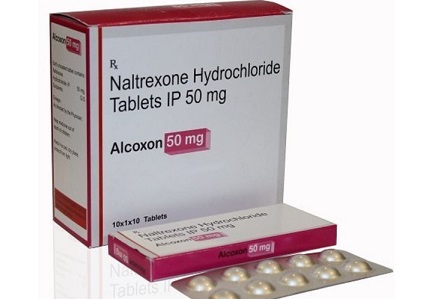Australian Scientist Discover That Naltrexone Can Help With Ion Channel Dysfunction That Cause Chronic Fatigue Syndrome In Long COVID
Nikhil Prasad Fact checked by:Thailand Medical News Team May 12, 2024 11 months, 2 weeks, 13 hours, 59 minutes ago
Long COVID-19 News: The aftermath of the COVID-19 pandemic has unveiled a new medical challenge known as post-COVID-19 condition, impacting millions worldwide. One of the hallmark features of this condition is ion channel dysfunction, akin to what is observed in myalgic encephalomyelitis/chronic fatigue syndrome (ME/CFS). In a groundbreaking discovery by researchers at Griffith University's National Center for Neuroimmunology and Emerging Diseases (NCNED), Queensland-Australia that is covered in this
Long COVID News report, it was found that Naltrexone has the potential in addressing ion channel dysfunction and the findings offers a ray of hope for long COVID patients.
 Australian Scientist Discover That Naltrexone Can Help With Ion Channel
Australian Scientist Discover That Naltrexone Can Help With Ion Channel
Dysfunction That Cause Chronic Fatigue Syndrome In Long COVID
Understanding the Significance of Ion Channels
Ion channels are pivotal membrane proteins regulating the passage of ions across cell membranes, crucial for numerous biological processes. Dysfunction in ion channels, particularly Transient Receptor Potential Melastatin 3 (TRPM3) channels, has been implicated in both ME/CFS and post-COVID-19 condition. These channels play a crucial role in calcium homeostasis, intracellular signaling, and immune cell function.
Parallelisms Between ME/CFS and Post-COVID-19 Condition
Studies have revealed striking parallels between ME/CFS and post-COVID-19 condition, including TRPM3 dysfunction in immune cells like Natural Killer (NK) cells. This commonality sheds light on potential therapeutic avenues that could benefit both patient groups. ME/CFS, characterized by chronic fatigue and neuroimmune exhaustion, shares symptoms with post-COVID-19 condition, such as persistent fatigue, cognitive impairment, and post-exertional malaise.
The Role of Naltrexone in Restoring Ion Channel Function
Naltrexone, primarily used for opioid addiction treatment, has shown promise in restoring TRPM3 function in NK cells. This restoration could potentially normalize cellular calcium levels and improve intracellular signaling pathways, essential for immune function and overall well-being. The mechanism of action involves negating the inhibitory function of µ-opioid receptors (µOR) on TRPM3 ion channels, leading to enhanced channel activity and calcium influx.
Clinical Trials and Therapeutic Prospects
Griffith University's NCNED is gearing up for clinical trials to assess the efficacy of low-dose Naltrexone in both long COVID and ME/CFS patients. These trials, based on previous successful laboratory trials, aim to evaluate the impact of Naltrexone on restoring ion channel function and alleviating symptoms. Should these trials yield positive outcomes, it could signify a substantial breakthrough in managing the debilitating symptoms associated with these conditions.
Implications for Post-COVID-19 Condition Patients
Post-COVID-19
condition patients often grapple with a myriad of symptoms ranging from fatigue to neurocognitive issues. The potential of Naltrexone in restoring ion channel function offers a glimmer of hope for alleviating these symptoms and improving the quality of life for affected individuals. By targeting the underlying mechanism of ion channel dysfunction, Naltrexone could address the root cause of persistent symptoms in long COVID patients.
Challenges and Future Directions
While the discovery of Naltrexone's role in ion channel dysfunction presents promising prospects, further research and clinical validation are imperative. Rigorous trials and ongoing monitoring will be crucial in gauging the long-term benefits and safety of this therapeutic approach. Additionally, understanding the interplay between ion channels, immune function, and disease progression will pave the way for more targeted and effective treatments.
Conclusion
The convergence of research efforts, spearheaded by Griffith University's NCNED, signifies a significant step forward in understanding and addressing the complexities of long COVID and ME/CFS. The potential of Naltrexone as a therapeutic intervention underscores the importance of exploring novel avenues to alleviate the suffering of individuals grappling with post-COVID-19 condition and related ailments. By bridging the gap between basic science discoveries and clinical applications, this research holds promise for transforming the landscape of long COVID management and improving patient outcomes.
The study findings were published in the peer reviewed journal: Frontiers in Immunology.
https://www.frontiersin.org/journals/immunology/articles/10.3389/fimmu.2024.1264702/full
For the latest
Long COVID News, keep on logging to Thailand Medical News.
